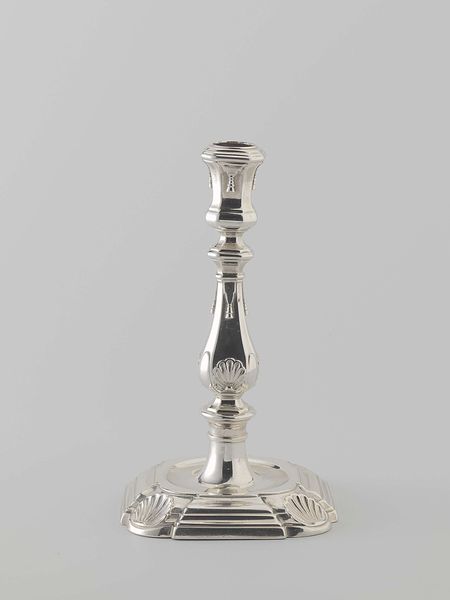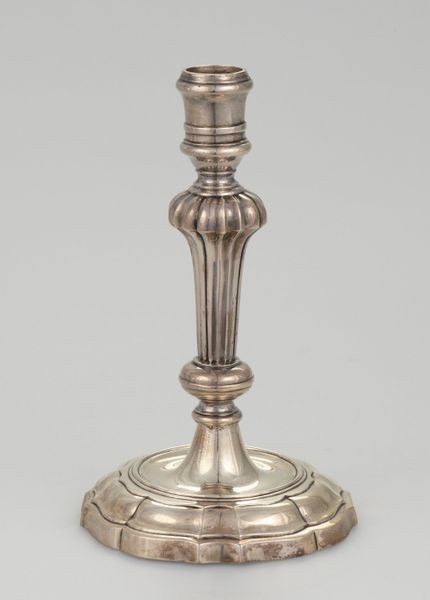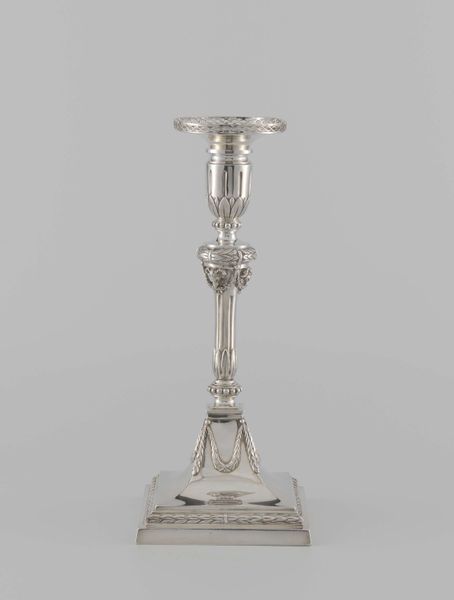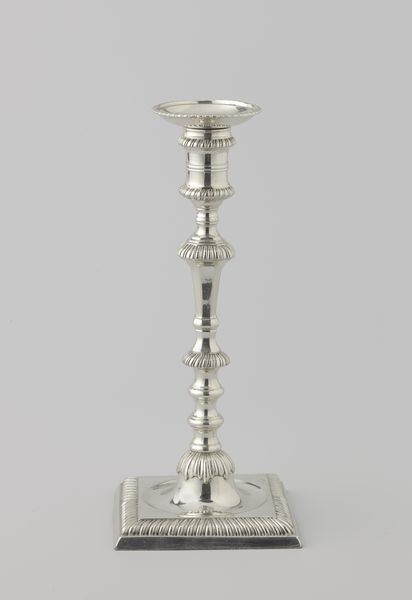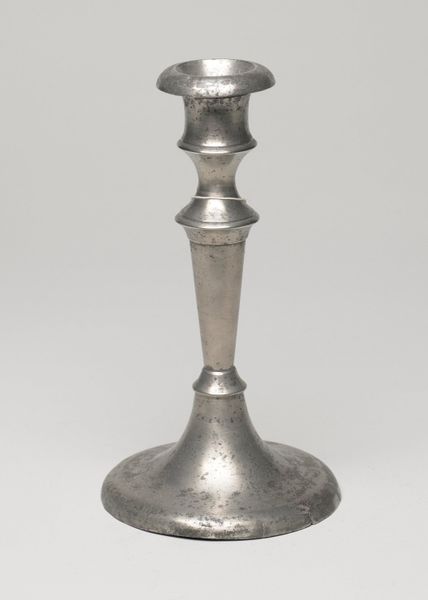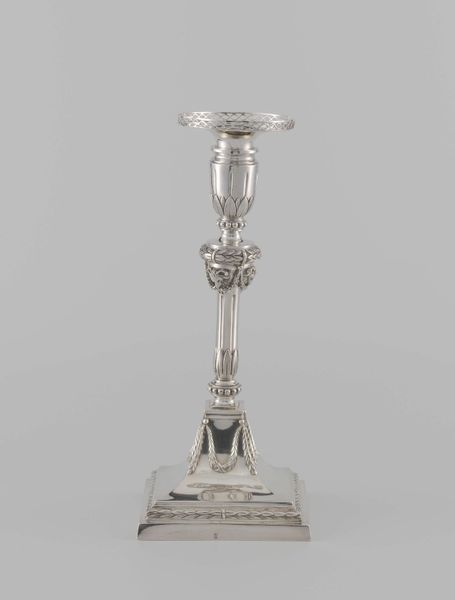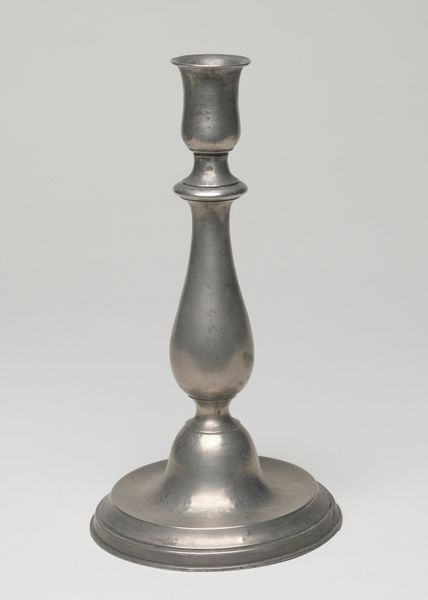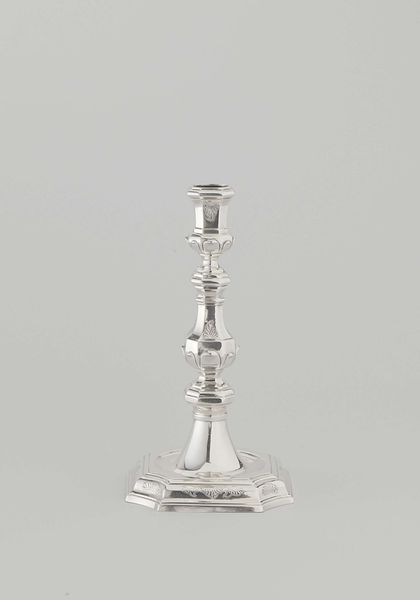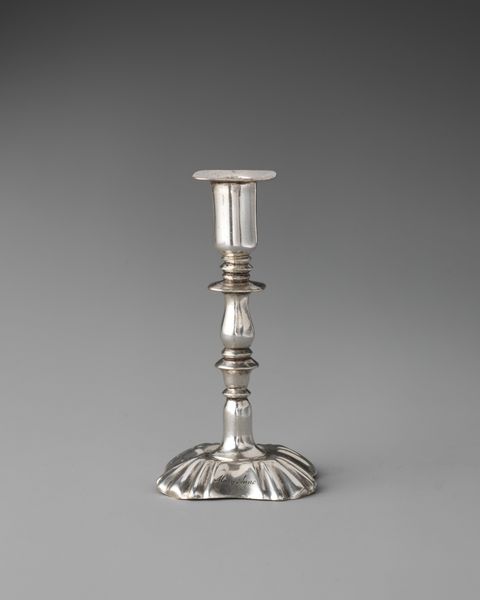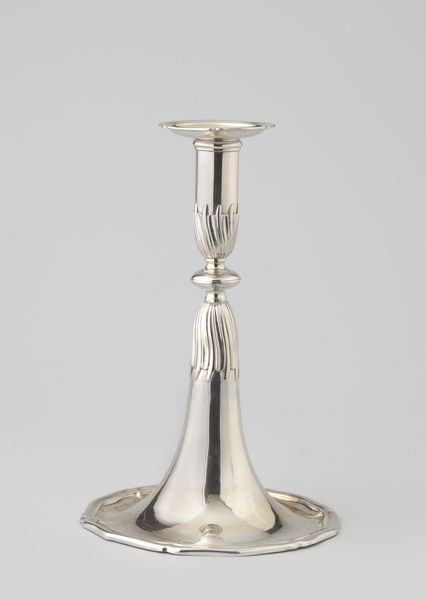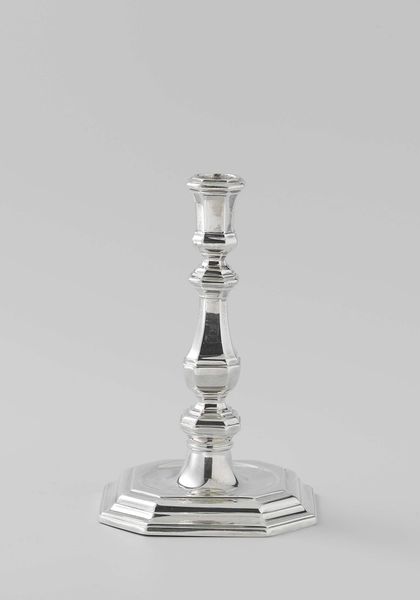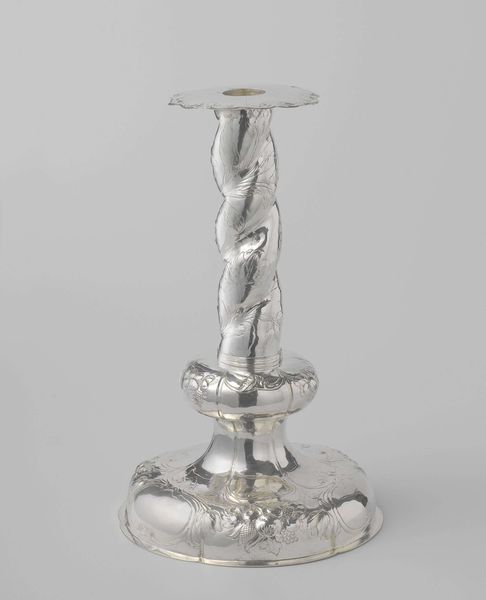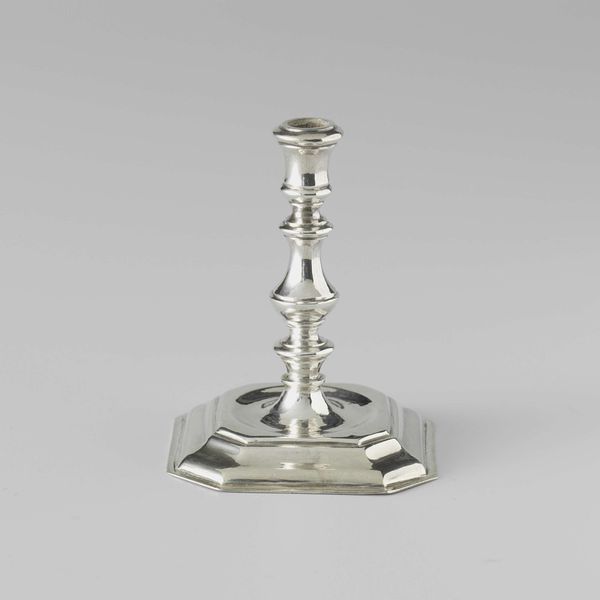
silver, metal, glass
#
silver
#
metal
#
glass
#
decorative-art
Dimensions: height 8 cm, diameter 2.9 cm
Copyright: Rijks Museum: Open Domain
Curator: Here we have an exquisite lamp created in 1847, attributed to Johannes Hendrik Bing. Notice the elegant combination of silver, metal, and glass. Editor: My first impression is one of subdued opulence. The piece seems designed to cast a gentle, diffused light, creating a comforting ambiance rather than harsh illumination. Curator: It's interesting you say that. Lighting like this was revolutionary. Think about the social implications: improved home lighting extending reading hours for the rising middle class, impacting education and literacy rates, as well as contributing to gender equity because it enabled new opportunities in domestic spaces. Editor: Absolutely, but let's consider its form. The structure, you’ll note, presents a strong verticality, rising from a solid base through the meticulously patterned shaft to support the gently curved glass shade. This careful arrangement leads the eye upwards, toward the light itself, creating a visual experience of ascension. The frosted glass adds an additional layer of diffusion that must feel luxurious in the mid-19th century. Curator: Precisely, and the design language speaks volumes. In this lamp, we see echoes of neoclassicism, subtly infused with emerging romantic sensibilities. This blend reflects the political tensions and the growing sentiment that beauty could uplift the soul of a nation, even as industrialization began reshaping society. The detailed metalwork is not mere decoration but a claim on culture and refinement during a period of societal change. It suggests social status. Editor: The lamp invites us to see lighting not merely as functional but as a statement of self-presentation—or perhaps even class aspiration through design. It shows what beauty could exist alongside industrial development. I’m particularly struck by the precision of the metal work just under the shade— Curator: Indeed, such objects often functioned as indicators of societal values. Thank you, this analysis invites us to look closer and ask pertinent questions about material and production histories. Editor: My pleasure. Examining this allows for further inspection of form as evidence to enrich our insights, helping viewers at home to expand perspectives in relation to their lived experience.
Comments
rijksmuseum about 2 years ago
⋮
New technology radically changed daily life during the 19th century. Such innovations, however, were no longer reflected in silver miniatures in the same way they had been in previous centuries. This silver lamp is one exception. It represents a modern type of oil lamp, introduced in France in 1836, which soon found its way into Dutch living rooms.
Join the conversation
Join millions of artists and users on Artera today and experience the ultimate creative platform.
